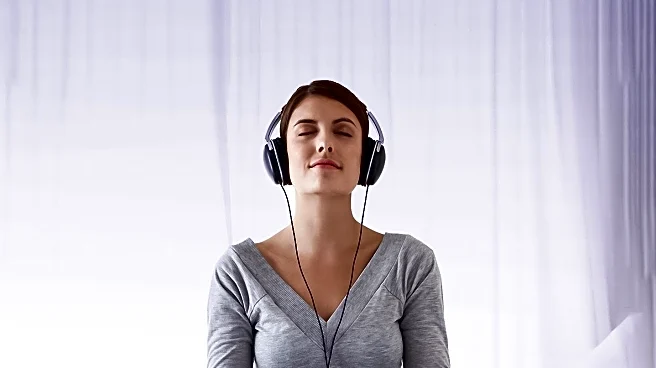What is the story about?
What's Happening?
Sound healing, a practice involving various types of noise such as white, pink, and brown noise, is gaining attention for its potential to improve sleep quality. According to sleep experts, these noises can mask disruptive sounds like slamming doors or car horns, which might otherwise wake a sleeping person. Mary Halsey Maddox, MD, a sleep specialist, notes that these rhythmic, soothing sounds help individuals drift off by creating a calming environment. The practice is part of a broader trend in holistic wellness, where immersive experiences including sound therapy, meditation, and mindfulness are offered to enhance overall well-being. The popularity of sound healing is reflected in its use in wellness programs and hotels, aiming to promote relaxation and better sleep hygiene.
Why It's Important?
The significance of sound healing lies in its potential impact on sleep quality, a crucial aspect of health and wellness. With over 14 percent of adults experiencing difficulty falling asleep, according to a 2020 CDC study, sound healing offers a non-invasive method to address sleep issues. By masking environmental noise, these sound techniques can improve sleep quality, particularly in noisy urban environments. This trend aligns with the growing interest in holistic health practices, which emphasize natural and integrative approaches to wellness. As more individuals seek alternatives to medication for sleep improvement, sound healing could become a valuable tool in promoting better sleep and overall health.
What's Next?
The exploration of sound healing for sleep improvement is likely to continue, with more research needed to substantiate its benefits. As interest in holistic wellness grows, sound healing may see increased adoption in various settings, including wellness retreats and sleep clinics. Stakeholders such as healthcare providers and wellness industry leaders may invest in further studies to understand the efficacy of different noise types. Additionally, the development of sound healing technologies and applications could expand, offering personalized solutions for individuals seeking better sleep. The integration of sound healing into mainstream wellness practices could lead to broader acceptance and utilization.
Beyond the Headlines
Sound healing's rise in popularity highlights a cultural shift towards embracing holistic and integrative health practices. This trend reflects a growing awareness of the importance of mental and emotional well-being, alongside physical health. The ethical dimension involves ensuring accessibility to sound healing practices, particularly for underserved communities who may benefit from non-pharmacological sleep interventions. As sound healing becomes more mainstream, considerations around standardization and regulation may emerge, ensuring safe and effective use of these techniques.
AI Generated Content
Do you find this article useful?












